ENiM 2 - 2009 (ISSN 2102-6629)
Sommaire
Pages
1-8
 L’ostracon DeM 1046 présente une formule magique au texte surprenant. De fait, le médecin-magicien ne s’adresse pas seulement au venin mais également aux conduits du corps du patient ; ce qui témoigne d’une attention aux effets secondaires possibles du traitement appliqué au patient. Ce phénomène semble se retrouver dans d’autres textes, comme en témoignent notamment les deux parallèles des P. Turin 1993 et P. Chester-Beatty XI.
L’ostracon DeM 1046 présente une formule magique au texte surprenant. De fait, le médecin-magicien ne s’adresse pas seulement au venin mais également aux conduits du corps du patient ; ce qui témoigne d’une attention aux effets secondaires possibles du traitement appliqué au patient. Ce phénomène semble se retrouver dans d’autres textes, comme en témoignent notamment les deux parallèles des P. Turin 1993 et P. Chester-Beatty XI.
 O. DeM 1046 presents two well known parallels: P. Turin 1993 and P. Chester-Beatty XI. From a synopsis presentation and the exhaustive study of this text, we can observe an interesting phenomenon: at the same time, the magician is asking the venom to go out of the patient’s body and the body’s vessels not to catch some disease due to the passage of venom. It looks like a representation of the concept of “side effects”.
O. DeM 1046 presents two well known parallels: P. Turin 1993 and P. Chester-Beatty XI. From a synopsis presentation and the exhaustive study of this text, we can observe an interesting phenomenon: at the same time, the magician is asking the venom to go out of the patient’s body and the body’s vessels not to catch some disease due to the passage of venom. It looks like a representation of the concept of “side effects”.
Pages
9-23
 L’analyse de quelques passages du Rituel de l’Embaumement (P. Boulaq III) permet de reconstituer le cycle du ba dans un contexte spécifique de momification et de comprendre la logique des traditions sur lesquelles il se fonde, résultant de l’observation minutieuse de la nature.
L’analyse de quelques passages du Rituel de l’Embaumement (P. Boulaq III) permet de reconstituer le cycle du ba dans un contexte spécifique de momification et de comprendre la logique des traditions sur lesquelles il se fonde, résultant de l’observation minutieuse de la nature.
 The analysis of some passages of the Embalming Ritual (P. Boulaq III) allows to reconstitute the cycle of the ba in a specific context of mummification and to understand the logic of the traditions on which it is based, resulting from the meticulous observation of the nature.
The analysis of some passages of the Embalming Ritual (P. Boulaq III) allows to reconstitute the cycle of the ba in a specific context of mummification and to understand the logic of the traditions on which it is based, resulting from the meticulous observation of the nature.
Pages
25-52
 Les notions de « couleurs » dans l’Égypte ancienne doivent être appréhendées non pas isolément mais selon une approche structurale, à l’intérieur de systèmes complémentaires ou antinomiques. L’analyse du vaste corpus des Textes des Pyramides permet ainsi de mettre en évidence la spécificité et les implications idéologiques du rouge (décher), qui s’oppose aux trois autres couleurs « fondamentales » que constituent le noir (kem), le blanc (hedj) et le vert (ouadj).
Les notions de « couleurs » dans l’Égypte ancienne doivent être appréhendées non pas isolément mais selon une approche structurale, à l’intérieur de systèmes complémentaires ou antinomiques. L’analyse du vaste corpus des Textes des Pyramides permet ainsi de mettre en évidence la spécificité et les implications idéologiques du rouge (décher), qui s’oppose aux trois autres couleurs « fondamentales » que constituent le noir (kem), le blanc (hedj) et le vert (ouadj).
 Concepts of “colors” in the Egyptian language cannot be studied separately; they have to be delt with inside structural systems, either complementary or antinomic. Through the analysis of the large corpus of the Pyramid Texts, this paper tries to highlight the specificity and the ideological background of the red colour (decher), as opposed to three other “fundamental” colors: black (kem), white (hedj) and green (ouadj).
Concepts of “colors” in the Egyptian language cannot be studied separately; they have to be delt with inside structural systems, either complementary or antinomic. Through the analysis of the large corpus of the Pyramid Texts, this paper tries to highlight the specificity and the ideological background of the red colour (decher), as opposed to three other “fundamental” colors: black (kem), white (hedj) and green (ouadj).
Pages
53-58
 Cette brève note lexicographique concerne le terme ghr.t, attesté par quelques
exemples provenant des temples gréco-romains de la région thébaine et par le P. Carlsberg I,
qui conduit à une traduction plus précise : « voûte céleste septentrionale ».
Cette brève note lexicographique concerne le terme ghr.t, attesté par quelques
exemples provenant des temples gréco-romains de la région thébaine et par le P. Carlsberg I,
qui conduit à une traduction plus précise : « voûte céleste septentrionale ».
 The subject of this short lexicographical note concerns the word ghr.t, attested in few
examples from the graeco-roman temples of the Theban area and in the P. Carlsberg I, which
leads to the most accurate translation “Northerly sky vault”.
The subject of this short lexicographical note concerns the word ghr.t, attested in few
examples from the graeco-roman temples of the Theban area and in the P. Carlsberg I, which
leads to the most accurate translation “Northerly sky vault”.
Pages
59-65
 À l’Abbaye de Grottaferrata (Italie) sont visibles des fragments de reliefs égyptisants et la partie inférieure d’une statue de Séthi I. Celle-ci fut apportée à l’époque romaine et provient du temple de Rê à Héliopolis. La publication récente d’un catalogue des sculptures de l’Abbaye a été l’occasion de réfléchir sur le lieu d'origine et sur la signification de cette statue dans le milieu romain. L’existence d’une villa très importante dans les environs du château de Borghetto, où la statue a été trouvée, permet de proposer l'hypothèse qu’elle y était placée. Il est possible d’attribuer cette villa à L. Funisulanus Vettonianus, important personnage du temps de Domitien, qui était apparenté à Funisulana Vettulla, femme de C. Tettius Africanus, préfet d’Égypte sous Domitien.
À l’Abbaye de Grottaferrata (Italie) sont visibles des fragments de reliefs égyptisants et la partie inférieure d’une statue de Séthi I. Celle-ci fut apportée à l’époque romaine et provient du temple de Rê à Héliopolis. La publication récente d’un catalogue des sculptures de l’Abbaye a été l’occasion de réfléchir sur le lieu d'origine et sur la signification de cette statue dans le milieu romain. L’existence d’une villa très importante dans les environs du château de Borghetto, où la statue a été trouvée, permet de proposer l'hypothèse qu’elle y était placée. Il est possible d’attribuer cette villa à L. Funisulanus Vettonianus, important personnage du temps de Domitien, qui était apparenté à Funisulana Vettulla, femme de C. Tettius Africanus, préfet d’Égypte sous Domitien.
 Three fragments of Egyptianizing reliefs and the bottom part of a statue of Sethi I are preserved in the Abbey of Grottaferrata (Italy). A catalog has recently been published highlighting new data about how the statue from Heliopolis ended up in a Roman context. In the neighbourhood of Borghetto Castle, where the statue was found, there was an important villa, probably belonging to L. Funisulanus Vettonianus, a relative of Funisulana Vettulla, the wife of C. Tettius Africanus, Prefect of Egypt.
Three fragments of Egyptianizing reliefs and the bottom part of a statue of Sethi I are preserved in the Abbey of Grottaferrata (Italy). A catalog has recently been published highlighting new data about how the statue from Heliopolis ended up in a Roman context. In the neighbourhood of Borghetto Castle, where the statue was found, there was an important villa, probably belonging to L. Funisulanus Vettonianus, a relative of Funisulana Vettulla, the wife of C. Tettius Africanus, Prefect of Egypt.
Pages
67-90
 Complément à l’inventaire des cultes d’Amon à Memphis datant du Nouvel Empire. Celui-ci comprend cinq formes supplémentaires, une liste des formes d’Amon «indéterminées» et un supplément aux formes d’Amon déjà connues.
Cette note est suivie d'une liste des monuments d'origine memphite victimes de martelages à l’époque amarnienne.
Complément à l’inventaire des cultes d’Amon à Memphis datant du Nouvel Empire. Celui-ci comprend cinq formes supplémentaires, une liste des formes d’Amon «indéterminées» et un supplément aux formes d’Amon déjà connues.
Cette note est suivie d'une liste des monuments d'origine memphite victimes de martelages à l’époque amarnienne.
 Complement to the inventory of worships of Amun in Memphis during the New Kingdom. This includes five additional forms, a list of “undetermined” Amun and a supplement to the Amun who are already known.
This note is follow by a list of the monuments of Memphis which are the victim of erasure during the Amarna period.
Complement to the inventory of worships of Amun in Memphis during the New Kingdom. This includes five additional forms, a list of “undetermined” Amun and a supplement to the Amun who are already known.
This note is follow by a list of the monuments of Memphis which are the victim of erasure during the Amarna period.
Pages
91-101
 Les historiens antiques et à leur suite, un grand nombre d'historiens modernes, ont sévèrement critiqué le quatrième souverain de l'Égypte hellénistique, Ptolémée Philopator, et au delà de la figure historique, leur jugement s'est naturellement focalisé sur le bilan de son règne. Cet état de fait tient en grande partie à la tradition transmise par Polybe et reprise par ses successeurs. Cependant, une remise en question de cette vision trop négative est perceptible depuis une quarantaine d´années grâce à une relecture des sources et à une analyse nouvelle des faits (dont certains inconnus des historiens de la première moitié du XXe siècle). Cet article propose de faire un point sur cette question.
Les historiens antiques et à leur suite, un grand nombre d'historiens modernes, ont sévèrement critiqué le quatrième souverain de l'Égypte hellénistique, Ptolémée Philopator, et au delà de la figure historique, leur jugement s'est naturellement focalisé sur le bilan de son règne. Cet état de fait tient en grande partie à la tradition transmise par Polybe et reprise par ses successeurs. Cependant, une remise en question de cette vision trop négative est perceptible depuis une quarantaine d´années grâce à une relecture des sources et à une analyse nouvelle des faits (dont certains inconnus des historiens de la première moitié du XXe siècle). Cet article propose de faire un point sur cette question.
 The ancient historians and at their turn, a large number of modern historians have severely criticized the forth sovereign of Hellenistic Egypt, Ptolemy IV Philopator and beyond the historic figure, they based their judgment on the facts of his reign. This situation is, in large part, the result of the tradition transmitted by Polybius and taken over by his successors. Nevertheless, this very negative perspective has been looked at differently during the last forty years due to reviewing the sources and reanalyzing the facts (some of which were unknown to the historians of the first half of the 20th century). This article aims to make a point in this matter.
The ancient historians and at their turn, a large number of modern historians have severely criticized the forth sovereign of Hellenistic Egypt, Ptolemy IV Philopator and beyond the historic figure, they based their judgment on the facts of his reign. This situation is, in large part, the result of the tradition transmitted by Polybius and taken over by his successors. Nevertheless, this very negative perspective has been looked at differently during the last forty years due to reviewing the sources and reanalyzing the facts (some of which were unknown to the historians of the first half of the 20th century). This article aims to make a point in this matter.
Pages
103-108
 Un nouvel examen de blocs de granite découverts à Tell Farâoun/Nebesheh par Petrie permet de préciser l’attribution du petit temple de l’ancienne ville d’Imet. Leur identification à deux montants de porte confirme la première impression que pouvait laisser la configuration des lieux, à savoir que le petit temple d’Imet ne serait pas la demeure de la déesse principale, Ouadjet dame d’Imet, mais celle de Min. L’époque à laquelle remonte ce temple, parfaitement daté par un dépôt de fondation du roi Amasis (XXVIe dyn.), correspond à celle où le dieu Min d’Imet apparaît dans la documentation.
Un nouvel examen de blocs de granite découverts à Tell Farâoun/Nebesheh par Petrie permet de préciser l’attribution du petit temple de l’ancienne ville d’Imet. Leur identification à deux montants de porte confirme la première impression que pouvait laisser la configuration des lieux, à savoir que le petit temple d’Imet ne serait pas la demeure de la déesse principale, Ouadjet dame d’Imet, mais celle de Min. L’époque à laquelle remonte ce temple, parfaitement daté par un dépôt de fondation du roi Amasis (XXVIe dyn.), correspond à celle où le dieu Min d’Imet apparaît dans la documentation.
 The reconsideration of granite fragments unearthed by Petrie at Tell Farʿun / Nebesheh allows us to clarify the attribution of the small temple of the ancient town of Imet. Their identification to two door-jambs confirms the first impression that could give the field, namely that the small temple is not the place of worship of Wadjet of Imet, the main deity, but the one of Min. The date of the construction of this temple, given by a foundation deposit of Amasis (26th dyn.), coincides with the date of the apparition of Min of Imet in the documentation.
The reconsideration of granite fragments unearthed by Petrie at Tell Farʿun / Nebesheh allows us to clarify the attribution of the small temple of the ancient town of Imet. Their identification to two door-jambs confirms the first impression that could give the field, namely that the small temple is not the place of worship of Wadjet of Imet, the main deity, but the one of Min. The date of the construction of this temple, given by a foundation deposit of Amasis (26th dyn.), coincides with the date of the apparition of Min of Imet in the documentation.
Pages
109-128
 L’analyse du cercueil de Pȝ-n(y)-jw (XXXe dyn. – dĂ©but de l’époque ptolĂ©maĂŻque ; MusĂ©e d’histoire naturelle de Santiago du Chili – MNHN 11.160) permet de mettre en lumière l’emploi d’une boiserie en trompe-l’œil originale et son rapport avec diffĂ©rents motifs religieux, notamment deux figures d’Anubis anthropomorphe adoptant la posture ksw.
L’analyse du cercueil de Pȝ-n(y)-jw (XXXe dyn. – dĂ©but de l’époque ptolĂ©maĂŻque ; MusĂ©e d’histoire naturelle de Santiago du Chili – MNHN 11.160) permet de mettre en lumière l’emploi d’une boiserie en trompe-l’œil originale et son rapport avec diffĂ©rents motifs religieux, notamment deux figures d’Anubis anthropomorphe adoptant la posture ksw.
 The analysis of the Pȝ-n(y)-jw’s coffin (Dynasty 30 – Ptolemaic Period; Museo Nacional de Historia Natural, Santiago of Chile – MNHN 11.160) allows to throw a light on the use of an original woodwork in trompe l’oeil and his relationship with various religious motives, specially two anthropomorphic Anubis in the ksw posture.
The analysis of the Pȝ-n(y)-jw’s coffin (Dynasty 30 – Ptolemaic Period; Museo Nacional de Historia Natural, Santiago of Chile – MNHN 11.160) allows to throw a light on the use of an original woodwork in trompe l’oeil and his relationship with various religious motives, specially two anthropomorphic Anubis in the ksw posture.
Pages
129-154
 La stèle Madrid 1999/99/4 est republiée, accompagnée d’un commentaire philologique et historique. Il s’agit en fait d’une stèle de donation, la plus ancienne actuellement connue et datant d’un roi de la fin de la XIIIe dynastie nommé Séhéqa-en-Rê Séankhi-Ptah.
Une bibliographie mise à jour de toutes les stèles de donation connues est donnée en appendice à l’article.
La stèle Madrid 1999/99/4 est republiée, accompagnée d’un commentaire philologique et historique. Il s’agit en fait d’une stèle de donation, la plus ancienne actuellement connue et datant d’un roi de la fin de la XIIIe dynastie nommé Séhéqa-en-Rê Séankhi-Ptah.
Une bibliographie mise à jour de toutes les stèles de donation connues est donnée en appendice à l’article.
 The stela Madrid 1999/99/4 is published anew with a philological and historical commentary. It appears to be the oldest donation stela known yet, dated to the first year of a king named Seheqa-en-Re Seankhi-Ptah, probably of the end of the XIIIth Dynasty. An updated bibliography of all known donation stelae is appended to the article.
The stela Madrid 1999/99/4 is published anew with a philological and historical commentary. It appears to be the oldest donation stela known yet, dated to the first year of a king named Seheqa-en-Re Seankhi-Ptah, probably of the end of the XIIIth Dynasty. An updated bibliography of all known donation stelae is appended to the article.
Pages
155-163
 Publication d’un petit bronze inédit (Égypte, époque ptolémaïque ?) montrant Ammôn coiffé de la couronne d’Amon et tenant un sceptre ouas. En appendice, la publication d’une tête en marbre d’Ammôn (Égypte, IIe s. ap. J.-.C.).
Publication d’un petit bronze inédit (Égypte, époque ptolémaïque ?) montrant Ammôn coiffé de la couronne d’Amon et tenant un sceptre ouas. En appendice, la publication d’une tête en marbre d’Ammôn (Égypte, IIe s. ap. J.-.C.).
 Publication of a small unpublished bronze (Egypt, Ptolemaic Period?) of Ammôn wearing Amon’s crown and holding the was-scepter. In Appendix, the publication of a marble head of Ammôn (Egypt, second century AD.).
Publication of a small unpublished bronze (Egypt, Ptolemaic Period?) of Ammôn wearing Amon’s crown and holding the was-scepter. In Appendix, the publication of a marble head of Ammôn (Egypt, second century AD.).
ENiM 18 - 2025
8 article(s) - 8 octobre 2025.
ENiM 1 à 18 (2008-2025) : 227 articles
5 210 998 téléchargements
10 397 792 consulations.
Index des auteurs

Mots clés

Derniers articles : 
CENiM - Mise en ligne des volumes Ă©puisĂ©s : 
 Anne-Sophie von BOMHARD DĂ©cans Ă©gyptiens, CENiM 23, Montpellier, 2020 — (2020)
Anne-Sophie von BOMHARD DĂ©cans Ă©gyptiens, CENiM 23, Montpellier, 2020 — (2020) 
 Jean-Claude Grenier L'Osiris ANTINOOS, CENiM 1, Montpellier, 2008 — (26 dĂ©cembre 2008)
Jean-Claude Grenier L'Osiris ANTINOOS, CENiM 1, Montpellier, 2008 — (26 dĂ©cembre 2008) 
TDENiM - Mise en ligne des volumes Ă©puisĂ©s : 
 Twitter
Twitter 4161989 visites - 9808 visite(s) aujourd’hui - 59 connecté(s)
© ENiM - Une revue d’égyptologie sur internet
Équipe Égypte Nilotique et Méditerranéenne - UMR 5140 - « Archéologie des Sociétés Méditerranéennes » (Cnrs) - Université Paul Valéry - Montpellier III
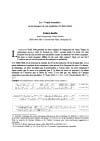
 Télécharger cet article au format pdf
Télécharger cet article au format pdf 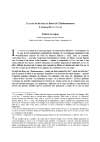
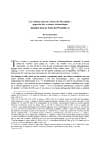
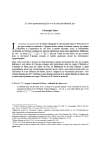
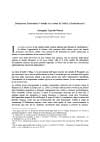
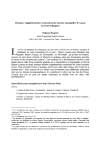
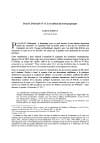
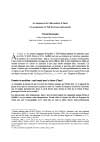
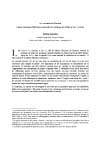
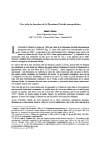
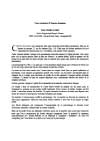





















 Contact
Contact
 Abonnez-vous !
Abonnez-vous ! Équipe Égypte Nilotique et Méditerranéenne
Équipe Égypte Nilotique et Méditerranéenne UMR 5140 « Archéologie des Sociétés Méditerranéennes » (Cnrs)
UMR 5140 « Archéologie des Sociétés Méditerranéennes » (Cnrs) Université Paul Valéry - Montpellier III
Université Paul Valéry - Montpellier III